 W
WRestoration ecology is the scientific study supporting the practice of ecological restoration, which is the practice of renewing and restoring degraded, damaged, or destroyed ecosystems and habitats in the environment by active human intervention and action. Effective restoration requires an explicit goal or policy, preferably an unambiguous one that is articulated, accepted, and codified. Restoration goals reflect societal choices from among competing policy priorities, but extracting such goals is typically contentious and politically challenging.
 W
WAppalachian bogs are boreal or hemiboreal ecosystems, which occur in many places in the Appalachian Mountains, particularly the Allegheny and Blue Ridge subranges. Though popularly called bogs, many of them are technically fens.
 W
WApplied ecology is a sub-field within ecology that considers the application of the science of ecology to real-world questions. It is also described as a scientific field that focuses on the application of concepts, theories, models, or methods of fundamental ecology to environmental problems.
 W
WBanrock Station Wetland Complex is a wetland complex located in South Australia which has been recognised as being of international importance by designation under the Ramsar Convention. It was listed on 21 October 2002 as Ramsar site 1221. It lies in the Riverland region of south-eastern South Australia and is adjacent to the Murray River. It is a floodplain wetland subject to an ongoing environmental restoration program by a commercial organisation which manages the wetlands and promotes ecologically sustainable land use practices. In 2002 Banrock Station Wines received the Ramsar Wetland Conservation Award in recognition of its conservation efforts.
 W
WA beetle bank, in agriculture and horticulture, is a form of biological pest control. It is a strip planted with grasses and/or perennial plants, within a crop field or a garden, that fosters and provides habitat for beneficial insects, birds, and other fauna that prey on pests.
 W
WThe Blue Oak Ranch Reserve, a unit of the University of California Natural Reserve System, is an ecological reserve and biological field station in Santa Clara County, California. It is located on 3,260 acres (13.2 km2) in the Diablo Range, northwest of Mount Hamilton, at 1,500 ft (460 m) elevation.
 W
WA buffer strip is an area of land maintained in permanent vegetation that helps to control air, soil, and water quality, along with other environmental problems, dealing primarily on land that is used in agriculture. Buffer strips trap sediment, and enhance filtration of nutrients and pesticides by slowing down runoff that could enter the local surface waters. The root systems of the planted vegetation in these buffers hold soil particles together which alleviate the soil of wind erosion and stabilize stream banks providing protection against substantial erosion and landslides. Farmers can also use buffer strips to square up existing crop fields to provide safety for equipment while also farming more efficiently.
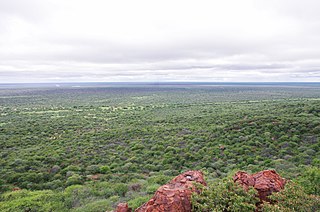 W
WBush encroachment is a natural phenomenon characterised by the increase in density of woody plants at the expense of the herbaceous layer. It is often considered an ecological regime shift and a symptom of land degradation. Bush encroachment is found to have severe negative consequences on key ecosystem services, especially biodiversity, animal habitat, land productivity and groundwater recharge. Bush encroachment can refer both to the expansion of native plants as well as the invasion and spread of invasive species. The phenomenon is observed across different ecosystems and with different characteristics and intensities globally. Among the more severely affected landscapes is the Veld in Southern Africa.
 W
WA check dam is a small, sometimes temporary, dam constructed across a swale, drainage ditch, or waterway to counteract erosion by reducing water flow velocity. Check dams themselves are not a type of new technology; rather, they are an ancient technique dating from the second century A.D. Check dams are typically, though not always, implemented in a system of several dams situated at regular intervals across the area of interest.
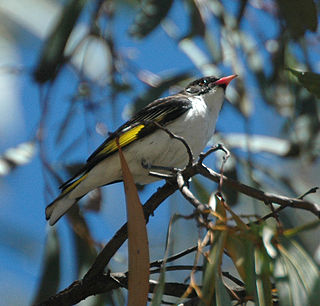 W
WThe Clarkesdale Bird Sanctuary is a nature reserve focused on protecting and restoring habitat for woodland birds. It lies in the state of Victoria in south-eastern Australia, near the small town of Linton, 30 km south-west of the city of Ballarat.
 W
WClimate restoration is the goal and associated actions intended to reverse the current trends of climate change and to restore CO2 to levels humans have survived long-term, below 300 ppm. This would restore the Earth system generally to a safe, sustainable and productive state, for the well-being of future generations and all humanity. Such actions include carbon dioxide removal from the Carbon dioxide in Earth's atmosphere, via biosequestration and carbon sequestration, which, in combination with emissions reductions, will reduce the level of CO2 in the atmosphere and thereby reduce the global warming produced by the greenhouse effect of an excess of CO2 over its pre-industrial level.
 W
WConservation grazing or targeted grazing is the use of semi-feral or domesticated grazing livestock to maintain and increase the biodiversity of natural or semi-natural grasslands, heathlands, wood pasture, wetlands and many other habitats. Conservation grazing is generally less intensive than practices such as prescribed burning, but still needs to be managed to ensure that overgrazing does not occur. The practice has proven to be beneficial in moderation in restoring and maintaining grassland and heathland ecosystems. The optimal level of grazing will depend on the goal of conservation, and different levels of grazing, alongside other conservation practices, can be used to induce the desired results.
 W
WConservation-reliant species are animal or plant species that require continuing species-specific wildlife management intervention such as predator control, habitat management and parasite control to survive, even when a self-sustainable recovery in population is achieved.
 W
WA constructed wetland (CW) is an artificial wetland to treat municipal or industrial wastewater, greywater or stormwater runoff. It may also be designed for land reclamation after mining, or as a mitigation step for natural areas lost to land development.
 W
WCross-boundary subsidies are caused by organisms or materials that cross or traverse habitat patch boundaries, subsidizing the resident populations. The transferred organisms and materials may provide additional predators, prey, or nutrients to resident species, which can affect community and food web structure. Cross-boundary subsidies of materials and organisms occur in landscapes composed of different habitat patch types, and so depend on characteristics of those patches and on the boundaries in between them. Human alteration of the landscape, primarily through fragmentation, has the potential to alter important cross-boundary subsidies to increasingly isolated habitat patches. Understanding how processes that occur outside of habitat patches can affect populations within them may be important to habitat management.
 W
WDam removal is the process of demolishing a dam, leaving a river to flow freely. It is undertaken for a variety of reasons that include environmental rehabilitation, structural weakness and maintenance expense.
 W
WDaylighting can be defined as "“opening up buried watercourses and restoring them to more natural conditions". An alternative definition refers to "“the practice of removing streams from buried conditions and exposing them to the Earth's surface in order to directly or indirectly enhance the ecological, economic and/or socio-cultural well-being of a region and its inhabitants”. The term is used to refer to the restoration of an originally open-air watercourse, which had at some point been diverted below ground, back into an above-ground channel. Typically, the rationale behind returning the riparian environment of a stream, wash, or river to a more natural state is to reduce runoff, create habitat for species in need of it, or improve an area's aesthetics. In the UK, the practice is also known as deculverting.
 W
WIn ecology, resilience is the capacity of an ecosystem to respond to a perturbation or disturbance by resisting damage and recovering quickly. Such perturbations and disturbances can include stochastic events such as fires, flooding, windstorms, insect population explosions, and human activities such as deforestation, fracking of the ground for oil extraction, pesticide sprayed in soil, and the introduction of exotic plant or animal species. Disturbances of sufficient magnitude or duration can profoundly affect an ecosystem and may force an ecosystem to reach a threshold beyond which a different regime of processes and structures predominates. When such thresholds are associated with a critical or bifurcation point, these regime shifts may also be referred to as critical transitions. Human activities that adversely affect ecological resilience such as reduction of biodiversity, exploitation of natural resources, pollution, land use, and anthropogenic climate change are increasingly causing regime shifts in ecosystems, often to less desirable and degraded conditions. Interdisciplinary discourse on resilience now includes consideration of the interactions of humans and ecosystems via socio-ecological systems, and the need for shift from the maximum sustainable yield paradigm to environmental resource management which aims to build ecological resilience through "resilience analysis, adaptive resource management, and adaptive governance".
 W
WEcosystem services are the many and varied benefits to humans provided by the natural environment and from healthy ecosystems. Such ecosystems include, for example, agroecosystems, forest ecosystems, grassland ecosystems and aquatic ecosystems. These ecosystems, functioning in healthy relationship, offer such things like natural pollination of crops, clean air, extreme weather mitigation, human mental and physical well-being. Collectively, these benefits are becoming known as 'ecosystem services', and are often integral to the provisioning of clean drinking water, the decomposition of wastes, and resilience and productivity of food ecosystems.
 W
WEden Landing Ecological Reserve is a nature reserve in Hayward and Union City, California, on the eastern shore of San Francisco Bay. The reserve is managed by the California Department of Fish and Game and comprises 5,040 acres of former industrial salt ponds now used as a low salinity waterbird habitat.
 W
WForest restoration is defined as “actions to re-instate ecological processes, which accelerate recovery of forest structure, ecological functioning and biodiversity levels towards those typical of climax forest” i.e. the end-stage of natural forest succession. Climax forests are relatively stable ecosystems that have developed the maximum biomass, structural complexity and species diversity that are possible within the limits imposed by climate and soil and without continued disturbance from humans. Climax forest is therefore the target ecosystem, which defines the ultimate aim of forest restoration. Since climate is a major factor that determines climax forest composition, global climate change may result in changing restoration aims.
 W
WA grassed waterway is a 2-metre (6.6 ft) to 48-metre-wide native grassland strip of green belt. It is generally installed in the thalweg, the deepest continuous line along a valley or watercourse, of a cultivated dry valley in order to control erosion. A study carried out on a grassed waterway during 8 years in Bavaria showed that it can lead to several other types of positive impacts, e.g. on biodiversity.
 W
WThe Hamilton Wetland Restoration Project, now known as the Hamilton/Bel Marin Keys Wetlands Restoration is a wetlands habitat restoration project at the former Hamilton Air Force Base—Hamilton Army Airfield (1930−1988) site and adjacent Bel Marin Keys shoreline, in Marin County, California.
 W
WThe Jasper Ridge Biological Preserve is a 483 hectares nature preserve and biological field station formally established as a reserve in 1973. The biological preserve is owned by Stanford University, and is located at 37.408°N 122.2275°W south of Sand Hill Road and west of Interstate 280 in Portola Valley, San Mateo County, California. It is used by students, researchers, and docents to conduct biology research, and teach the community about the importance of that research. The preserve encompasses Jasper Ridge and Searsville Lake and the upper reaches of San Francisquito Creek, along with the latter's Corte Madera Creek and Bear Creek tributaries.
 W
WKodaikanal mercury poisoning is a proven case of mercury contamination at the hill station of Kodaikanal by Hindustan Unilever in the process of making mercury thermometers for export around the world. The exposé of the environmental abuse led to the closure of the factory in 2001 and opened up a series of issues in India such as corporate liability, corporate accountability and corporate negligence.
 W
WLand rehabilitation as a part of environmental remediation is the process of returning the land in a given area to some degree of its former state, after some process has resulted in its damage. Many projects and developments will result in the land becoming degraded, for example mining, farming and forestry.
 W
WLand restoration is the process of ecological restoration of a site to a natural landscape and habitat, safe for humans, wildlife, and plant communities. Ecological destruction, to which land restoration serves as an antidote, is usually the consequence of pollution, deforestation, salination or natural disasters. Land restoration is not the same as land reclamation, where existing ecosystems are altered or destroyed to give way for cultivation or construction. Land restoration can enhance the supply of valuable ecosystem services that benefit people.
 W
WThe Land Trust is a British charity, based in Warrington, Cheshire, which owns or manages open spaces restored from derelict land for public benefit. Its vision is "to improve the quality of people’s lives by creating sustainable, high quality green spaces that deliver environmental, social and economic benefits".
 W
WLandscape ecology is the science of studying and improving relationships between ecological processes in the environment and particular ecosystems. This is done within a variety of landscape scales, development spatial patterns, and organizational levels of research and policy. Concisely, landscape ecology can be described as the science of landscape diversity as the synergetic result of biodiversity and geodiversity.
 W
WLife After People is a television series on which scientists, mechanical engineers, and other experts speculate about what might become of Earth if humanity instantly disappeared. The featured experts also talk about the impact of human absence on the environment and the vestiges of civilization thus left behind. The series was preceded by a two-hour special that aired on January 21, 2008, on the History Channel which served as a de facto pilot for the series that premiered April 21, 2009. The documentary and subsequent series were both narrated by James Lurie.
 W
WThe U.S. Fish and Wildlife Service (USFWS) has a number of programs aimed at Mission blue butterfly habitat conservation, which include lands traditionally inhabited by the Mission blue butterfly, an endangered species. A recovery plan, drawn up by the U.S. Fish and Wildlife Service in 1984, outlined the need to protect Mission blue habitat and to repair habitat damaged by urbanization, off highway vehicle traffic, and invasion by exotic, non-native plants. An example of the type of work being done by governmental and citizen agencies can be found at the Marin Headlands in the Golden Gate National Recreation Area. In addition, regular wildfires have opened new habitat conservation opportunities as well as damaging existing ones.
 W
WAlbert Morris, was a highly acclaimed amateur Australian botanist, landscaper, ecologist, conservationist and pioneer developer of the re-vegetation technique natural regeneration, who also utilised restoration principles that are today known as ecological restoration.
 W
WMud-puddling, or simply puddling, is a behaviour most conspicuous in butterflies, but occurs in other animals as well, mainly insects; they seek out nutrients in certain moist substances such as rotting plant matter, mud and carrion and they suck up the fluid. Where the conditions are suitable, conspicuous insects such as butterflies commonly form aggregations on wet soil, dung or carrion. From the fluids they obtain salts and amino acids that play various roles in their physiology, ethology and ecology. This behaviour also has been seen in some other insects, notably the leafhoppers, e.g. the potato leafhopper, Empoasca fabae.
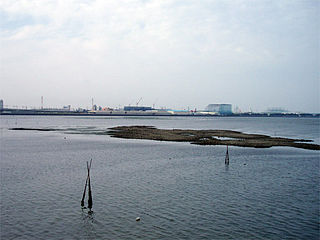 W
WOyster reef restoration refers to the process of rebuilding or restoring of oyster reefs all over the globe. Over time, oysters have been negatively affected by environmental change, such as harmful fishing techniques, over harvesting, water pollution, and other factors. The results of these factors have been disease and ultimately, a large decline in the global population of oysters and the prevalence and sustainability of oyster reefs. Apart from the ecological importance of oyster reefs, oyster farming is an important industry, particularly in coastal areas. Both artificial materials and natural components have been used to rebuild the reefs in an attempt to regenerate the oyster population thus fostering the reformation of reefs.
 W
WThe Palo Alto Baylands Nature Preserve, known officially as the Baylands Nature Preserve, is the largest tract of undisturbed marshland remaining in the San Francisco Bay. Fifteen miles of multi-use trails provide access to a unique mixture of tidal and fresh water habitats. The preserve encompasses 1,940 acres in both Palo Alto and East Palo Alto, and is owned by the city of Palo Alto, California, United States. It is an important habitat for migratory shorebirds and is considered one of the best birdwatching spots on the West Coast.
 W
WPlant defense against herbivory or host-plant resistance (HPR) describes a range of adaptations evolved by plants which improve their survival and reproduction by reducing the impact of herbivores. Plants can sense being touched, and they can use several strategies to defend against damage caused by herbivores. Many plants produce secondary metabolites, known as allelochemicals, that influence the behavior, growth, or survival of herbivores. These chemical defenses can act as repellents or toxins to herbivores, or reduce plant digestibility.
 W
WLitterfall, plant litter, leaf litter, tree litter, soil litter, or duff, is dead plant material that have fallen to the ground. This detritus or dead organic material and its constituent nutrients are added to the top layer of soil, commonly known as the litter layer or O horizon. Litter is an important factor in ecosystem dynamics, as it is indicative of ecological productivity and may be useful in predicting regional nutrient cycling and soil fertility.
 W
WPrairie restoration is a conservation effort to restore prairie lands that were destroyed due to industrial, agricultural, commercial, or residential development. For example, the U.S. state of Illinois alone once held over 35,000 square miles (91,000 km2) of prairie land and now just 3 square miles (7.8 km2) of that original prairie land is left.
 W
WA puddle is a small accumulation of liquid, usually water, on a surface. It can form either by pooling in a depression on the surface, or by surface tension upon a flat surface.
 W
WRevegetation is the process of replanting and rebuilding the soil of disturbed land. This may be a natural process produced by plant colonization and succession, manmade rewilding projects, accelerated process designed to repair damage to a landscape due to wildfire, mining, flood, or other cause. Originally the process was simply one of applying seed and fertilizer to disturbed lands, usually grasses or clover. The fibrous root network of grasses is useful for short-term erosion control, particularly on sloping ground. Establishing long-term plant communities requires forethought as to appropriate species for the climate, size of stock required, and impact of replanted vegetation on local fauna. The motivations behind revegetation are diverse, answering needs that are both technical and aesthetic, but it is usually erosion prevention that is the primary reason. Revegetation helps prevent soil erosion, enhances the ability of the soil to absorb more water in significant rain events, and in conjunction reduces turbidity dramatically in adjoining bodies of water. Revegetation also aids protection of engineered grades and other earthworks.
 W
WIn stream restoration, river engineering or coastal engineering, revetments are sloping structures placed on banks or cliffs in such a way as to absorb the energy of incoming water. In military engineering they are structures, again sloped, formed to secure an area from artillery, bombing, or stored explosives. River or coastal revetments are usually built to preserve the existing uses of the shoreline and to protect the slope, as defense against erosion.
 W
WRiparian-zone restoration is the ecological restoration of riparian-zone habitats of streams, rivers, springs, lakes, floodplains, and other hydrologic ecologies. A riparian zone or riparian area is the interface between land and a river or stream. Riparian is also the proper nomenclature for one of the fifteen terrestrial biomes of the earth; the habitats of plant and animal communities along the margins and river banks are called riparian vegetation, characterized by Aquatic plants and animals that favor them. Riparian zones are significant in ecology, environmental management, and civil engineering because of their role in soil conservation, their habitat biodiversity, and the influence they have on fauna and aquatic ecosystems, including grassland, woodland, wetland or sub-surface features such as water tables. In some regions the terms riparian woodland, riparian forest, riparian buffer zone, or riparian strip are used to characterize a riparian zone.
 W
WStream restoration or river restoration, also sometimes referred to as river reclamation, is work conducted to improve the environmental health of a river or stream, in support of biodiversity, recreation, flood management and/or landscape development. Stream restoration approaches can be divided into two broad categories: form-based restoration, which relies on physical interventions in a stream to improve its conditions; and process-based restoration, which advocates the restoration of hydrological and geomorphological processes to ensure a stream's resilience and ecological health. Form-based restoration techniques include deflectors; cross-vanes; weirs, step-pools and other grade-control structures; engineered log jams; bank stabilization methods and other channel-reconfiguration efforts. These induce immediate change in a stream, but sometimes fail to achieve the desired effects if degradation originates at a wider scale. Process-based restoration includes restoring lateral or longitudinal connectivity of water and sediment fluxes and limiting interventions within a corridor defined based on the stream's hydrology and geomorphology. The beneficial effects of process-based restoration projects may sometimes take time to be felt since changes in the stream will occur at a pace that depends on the stream dynamics.
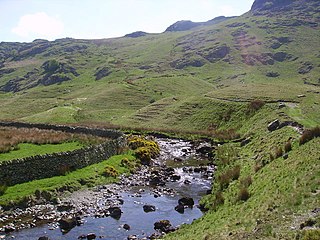 W
WSwindale Beck is a stream in Cumbria, England. It is formed at Swindale Head where Mosedale Beck, from the slopes of Tarn Crag, joins Hobgrumble Beck from Selside Pike. The stream flows north-east along Swindale and joins the River Lowther near Rosgill between Shap and Bampton. In 2016, 750 m of straightened channel was replaced with 890 m of a new sinuous channel, reconnecting the stream to its surrounding floodplain.
 W
WThreatened Species are any species which are vulnerable to endangerment in the near future. Species that are threatened are sometimes characterised by the population dynamics measure of critical depensation, a mathematical measure of biomass related to population growth rate. This quantitative metric is one method of evaluating the degree of endangerment.
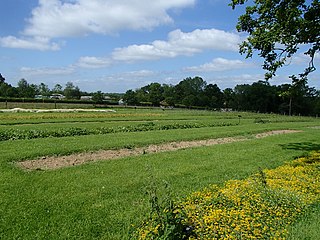 W
WThe UK Native Seed Hub (UKNSH) is a project of the Royal Botanic Gardens, Kew's Millennium Seed Bank Partnership growing and distributing seeds of UK native plant species. It is in part a response to the 2010 report Making Space for Nature by Sir John Lawton. The project, located at Wakehurst Place, in West Sussex, in the High Weald of southern England, is dedicated to enhancing the resilience and coherence of the UK's ecological networks by improving the quality, quantity, and diversity of UK seed species available for use in conservation, rehabilitation, and restoration projects.
 W
WWaterway restoration is the activity of restoring a canal or river, including special features such as warehouse buildings, locks, boat lifts, and boats. In the United Kingdom, Canada and the United States, the focus of waterway restoration is on improving navigability, while in Australia the term may also include improvements to water quality. (For water quality improvement activity in the US and UK see stream restoration.)
 W
WA wildlife corridor, habitat corridor, or green corridor is an area of habitat connecting wildlife populations separated by human activities or structures. This allows an exchange of individuals between populations, which may help prevent the negative effects of inbreeding and reduced genetic diversity that often occur within isolated populations. Corridors may also help facilitate the re-establishment of populations that have been reduced or eliminated due to random events.
 W
WWildlife crossings are structures that allow animals to cross human-made barriers safely. Wildlife crossings may include underpass tunnels or wildlife tunnels, viaducts, and overpasses or green bridges ; amphibian tunnels; fish ladders; canopy bridge, tunnels and culverts ; and green roofs.
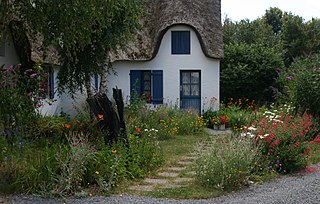 W
WA wildlife garden is an environment created by a gardener that serves as a sustainable haven for surrounding wildlife. Wildlife gardens contain a variety of habitats that cater to native and local plants, birds, amphibians, reptiles, insects, mammals and so on. Establishing a garden that emulates the environment before the residence was built and/or renders the garden similar to intact wild areas nearby (rewilding) will allow natural systems to interact and establish an equilibrium, ultimately minimizing the need for gardener maintenance and intervention. Wildlife gardens can also play an essential role in biological pest control, and also promote biodiversity, native plantings, and generally benefit the wider environment.
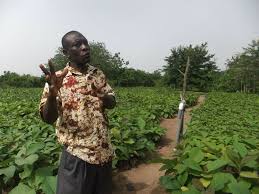 W
WPaul Yeboah, is an educator, farmer, permaculturist, community developer, and social entrepreneur. He is the founder and coordinator of the Ghana Permaculture Institute and Network in Techiman, Ghana, West Africa. It is located in the Brong-Ahafo Region of Ghana. The purpose of the Institute is to build and maintain a stable food system, to take care of the local ecosystems, and to improve the quality of life in the rural areas. The GPN trains students and community in sustainable ecological farming techniques. They support projects throughout Ghana; women groups, micro-finance projects; teach growing moringa; mushroom production; alley cropping, food forests development and Agroforestry.